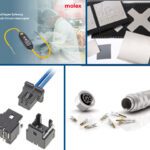Standards for Automotive Connectors Differ in Europe and the US
In a global economy, we see many of the same cars on the roads in Europe and the US. But the electronics packages inside them may differ due to differences in standards for automotive connectors and components.

The global automobile market is not constrained by borders, national pride, or even tariffs. On the streets of Germany, New York, or London, you’ll see a multinational mix of Audis, Fords, Toyotas, Volkswagens, Hondas, Volvos, and in some places even a few Bentleys, Peugeots, and Teslas. But the components inside these vehicles may be different from one market to the next, even within the same models, due to country-specific standards and regulations. Connector companies that do business with European and US automakers either have to offer two sets of products to meet these nations’ specific needs or offer connectors that are designed to meet all applicable standards, across markets, for automotive connectors. (And once you consider the Asian car markets, other standards come into play as well.)

“First of all, the two most important standards that must be achieved for every product are UL (US) and VDE (Germany/Europe) certifications. This is a must for any connector at Lumberg,” said Kai Rotthaus, head of corporate communications at Lumberg GmbH. The UL and VDE (Verband der Elektrotechnik) organizations certify electronics used in automotive, as well as other applications through rigorous testing protocols. These certifications both indicate that products meet a strict set of guidelines for safety, reliability, and environmental sustainability.
“They must also follow the two automotive standards, USCAR for the US and LV214 in Europe. USCAR 2, released by the Society of Automotive Engineers (SAE) in 2008, covers performance testing at all phases of development, production, and field analysis of electrical terminals, connectors, and components that constitute the electrical connection systems in high voltage (60~600V) road vehicle applications. LV214 is an automotive standard that was developed by representatives of the German car manufacturers Audi AG, BMW AG, Daimler AG, Porsche AG, and Volkswagen AG. It is state-of-the-art for almost any first-tier to x-tier supplier,” said Rotthaus. The LV214 standard is technically still in the draft form, but connector companies including Lumberg, JAE, Schleuniger, TE Connectivity, and many more, already offer products that meet this standard’s objectives.
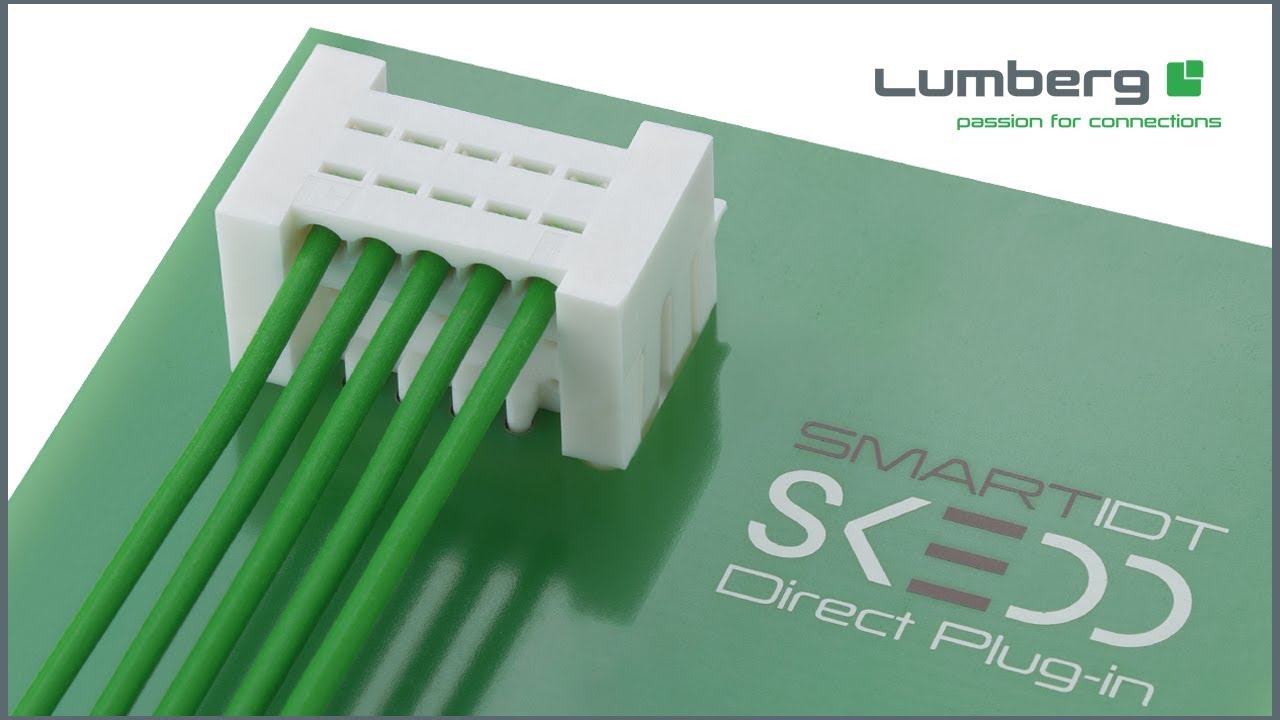
Lumberg’s SmartSKEDD connector offers new opportunities for automotive PCB designs.
LV214 addresses the ability of terminals to be recognized by crimp force monitors. In an automotive wire harness, a compliant terminal must exhibit certain crimp force characteristics so that monitors can detect error modes and monitor the quality of a crimped terminal, making sure that adequate pressure is applied to the crimp. The US Council for Auto Research (USCAR) standards cover multiple automotive areas, including safety, electrical wiring, electronics, and energy storage. Another important automotive consideration, low-voltage differential signaling (LVDS), addresses high performance data transmission applications across global markets. This type of data signaling uses two wires to transmit high-speed signals.
So, are connectors certified to USCAR or LV214 better? Neither is necessarily better, said Rotthaus. “Both standards test more or less the same, but they differ in the strength of their expression in the individual test groups. For example, in the USCAR, the hydrolysis test group is much stricter and more comprehensive than in the LV214, which can possibly lead to a different plastic material being used for the connector housing, or some other difference.”
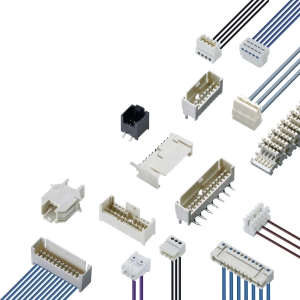
The Lumberg RAST 2.5 connector is a popular IDT connector used in automotive applications.
Another difference: Crimp-technology is used by US car makers, but European vehicles are moving away from this method. “We even do not produce crimp-contacts. Instead, we have used insulation displacement contact technology for more than 30 years, and 511 models of 72 car makers rely on this technology from Lumberg,” said Rotthaus. “LV 214 can be applied for RAST connectors to only a certain degree, as it targets dummy housings for connectors in which crimp contacts are individually placed. The RAST 2.5 system, however, uses IDC technology to form a single unit with the contact base. Consequently, certain test groups that cater to the casing or the separate crimp contact, cannot be tested due to the system’s design.”
As the automotive industry rapidly shifts to integrate new technologies, from the conversion of vehicle lighting to LEDs to autonomous driving and safety systems, updates to these standards will have a decisive influence on vehicle design. The conversion to electric cars will also replace many mechanical components and systems with electronic systems, which are subject to a greater array of standards and regulations, as each element is subject to country-specific and sometimes component-specific guidelines.
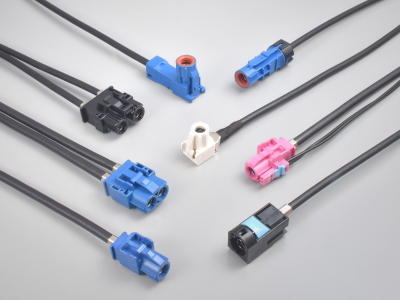
JAE’s HSD-compatible MX65 connector series addresses the increasing demand for in-vehicle high-speed transmission.
Jussi Takaneva, head of industrial, multimedia, and distribution at JAE, says the company is expanding its range of connectors that meet European standards as more vehicle designs integrate systems that require in-vehicle high-speed transmission capabilities. “Our automotive focus is on high-frequency product lines, safety systems, and miniature connectors,” he said. “We see the major automotive industry growth areas as ADAS (advanced driver-assistance systems), the connected car, infotainment, and e-mobility. The HSD-compatible MX65 connector series addresses the increasing demand for in-vehicle high-speed transmission.”
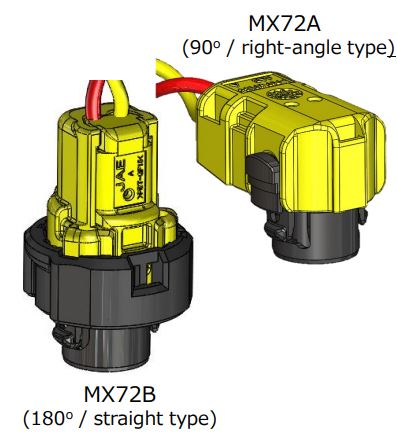
JAE’s MX72A/B connector
In addition to creating products for the EU and US markets, JAE also serves Asia. China and Japan have their own unique sets of requirements for electronics used in automotive applications. A new product may originate in one region, based on the needs of specific customers, but a good product will be made available to multiple markets. “Eventually, we target or create products for various standards in many regions,” said Takaneva.
As seen with RoHS, even when a standard is developed for a specific country, the global economy necessitates that products are able to cross borders easily. JAE sees global standards as key to future connector development. “The use of the global standard ISO/AK standard interfaces is increasing,” said Takaneva. “In addition to the growth in high-speed systems, the safety systems sector is experiencing an increased demand for pyrotechnic device applications. To respond to this growing demand, JAE is developing MX72A/B connectors, a range of self-rejecting squib connectors compatible with AK2 standardized interfaces.”
In other words, the easiest solution for a small and interconnected world may be one standard that rules them all.
Like this article? Check out our automotive, e-mobility, autonomous vehicle, electric car, high-speed data, and industry standards articles, our Automotive Market page, and our other 2019 articles.
- Where in the World is Amphenol LTW’s Luc Kan? - April 23, 2024
- TE Connectivity’s Sustainability Efforts Pay Off - April 23, 2024
- What is a VGA Connector? - April 23, 2024
